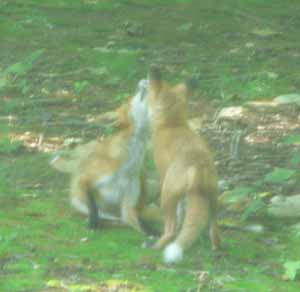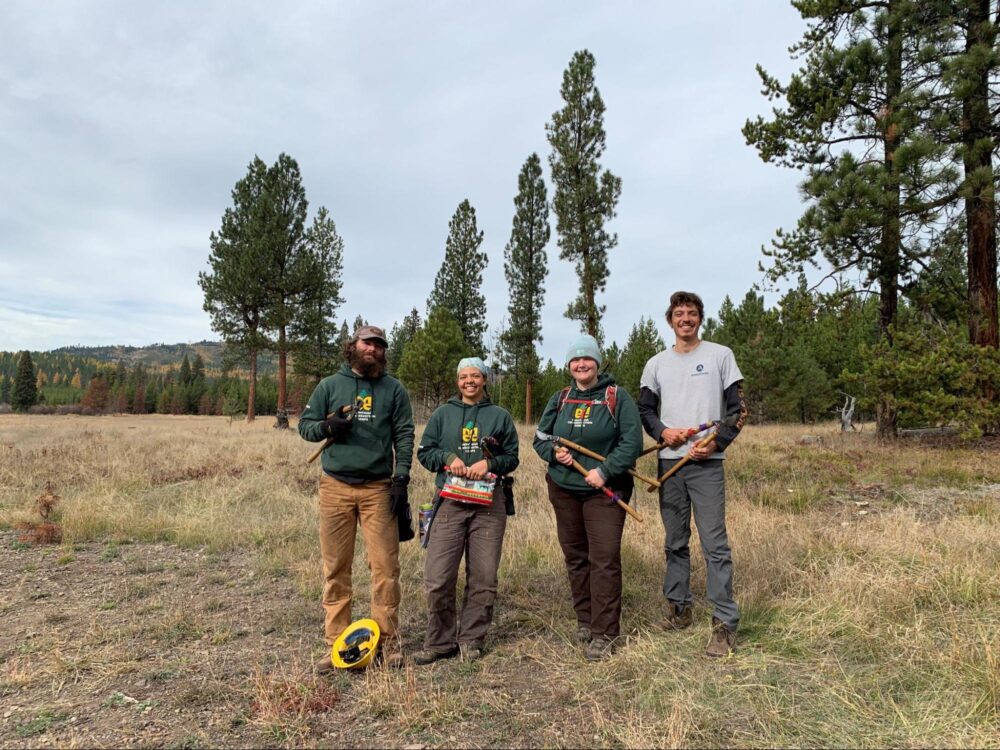We have much more to do and your continued support is needed now more than ever.
Nature Is My Gardener
Or you could call this blog, How to Garden for Wildlife in Zero Easy Steps.
A Hands-off Policy
In a poem that captivated my imagination when I was about 11 years old, Walt Whitman wrote, “I think I could turn and live with the animals, they are so placid and self contained.” At that time I wanted to live with the animals too, preferably with a pack of wolves (I had yet to recover from reading Rudyard Kipling’s Mowgli stories, about a boy raised by wolves in India, a few years before). Now, thanks in large part to the wildish nature of my backyard, an NWF Certified Backyard Wildlife Habitat®, I find that I more or less do live with the animals, or rather, they have turned to live with me.
When my wife and I first moved into our suburban house in northern Virginia, I decided to leave our backyard alone. Heavily wooded, it lay in deep shade and backed to a larger woodland. I neither water nor fertilize my yards anyway, and this backyard was too shadowed for grass. In fact, it was covered by a massive moss bed that would turn emerald green in spring, before the trees grew their leaves. I wanted to leave it alone so I could see what nature had in store for it. I didn’t want to mow it, feed it, water it, plant it or anything else. I wanted to see what seeds the wind would plant, and which plants the sun and the clouds would let grow.
The result was the animals.
I Didn’t Build It, But They Came Anyway
Soon after I put up a bird feeder, American crows started coming in groups, giving me a sense of connecting with wildlife. Usually

But it was a family of pileated woodpeckers that made me feel that my approach to gardening was working out. One day a pair of these woodpeckers—big as crows, heads topped with large red crests, shy and with a marked preference for woodlands—showed up at my feeder with two fledged offspring. They clamored over the feeder, the adults hammering into the suet blocks, and the young ones sliding awkwardly on the wooden roof of the feeder, still mastering the art of fighting gravity. Their presence gave my backyard an important seal of approval. If pileated woodpeckers were coming in, something was okay back there. But my gardening partner was deeply experienced: Nature has been gardening for wildlife since forever.
Squirrels and Deer
The tree squirrels are the main attraction, or at least the most ubiquitous, as might be expected—eastern grays. They are constantly in sight, but a few individuals stand out. One of these was a kamikaze that broke though my bird-feeder defense mechanism, a wobbly plastic sleeve mounted on the pole holding the feeder, depriving squirrels of any hope of climbing up to the food. It worked for about five or six years before one especially reckless squirrel took an aerial approach. He climbed to the roof of the house and flung himself out at least a dozen feet, as well as about 10 feet down, to the feeder. But the approach wasn’t foolproof. Once he miscalculated and rocketed straight past the feeder, overshooting by about 8 feet or so and crashing to the ground. Ah well, perhaps flying squirrels got their start that way. I moved the feeder a few feet farther from the house, putting an end to his escapades.

Squirrels get devoured once in awhile. One morning a red-shouldered hawk captured a gray squirrel and landed on the rail fence surrounding the yard to tear at the rodent for a few minutes before flying off. There’s nothing like a little predatory action to make a wildlife habitat seem truly certified. On another occasion, a red fox that denned in the woods gave frantic chase to a dodging squirrel beneath a rhododendron shrub and emerged with the squirrel limp in its vulpine jaws. Once a fox carrying a dead squirrel jumped up on the top rail of the fence and sat down. A second red fox joined it, looking on expectantly, but the first one kept the squirrel for itself.
Falling Trees
Two years ago, a developer—may Aldo Leopold curse him—cut down about two-thirds of the woods that lay beyond my backyard to build what he optimistically called luxury homes. The woods directly behind my yard were spared, but the spot where the red fox had its den beneath a fallen tree was not. I feared I’d seen the last of the fox.
But one spring day, not long after the cutting of the woods, the red fox emerged from under my deck. Far from disappearing, it had moved in with me. And it was in the company of three pups, which played on the patio.
Meanwhile, the fattest woodchuck I’ve ever seen had been roaming my backyard the previous summer and had spent the winter under my deck, burrowed in beneath the safe harbor of the deck’s wooden floor. I wonder what the woodchuck and the foxes made of one another that spring. Apparently not a meal, as the woodchuck continued to trundle around the yard in its magnificent obesity the following autumn.
As if to underscore that the animals had turned and lived with the humans, one morning I glanced out a window to see a white-tailed deer, a large house cat—a white and tan feline that must weigh 15 pounds or more—and a red fox standing by the rail fence as if at three points of a triangle not 10 feet apart. They looked at one other for several minutes. What went through their minds? To their consciousnesses must be added a fourth, that of the clothed ape at the window. Together we had captured a moment of acknowledgement, one to another, there in my Certified Wildlife Habitat®, where all the gardening is done by wind, rain, and sun.




















